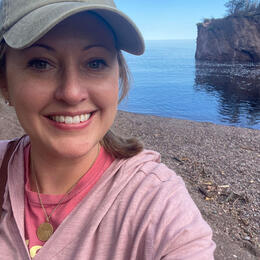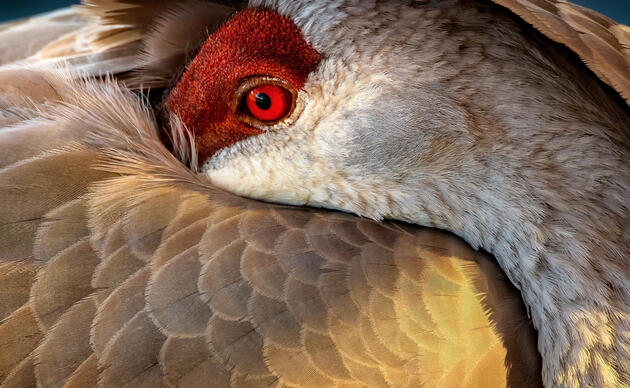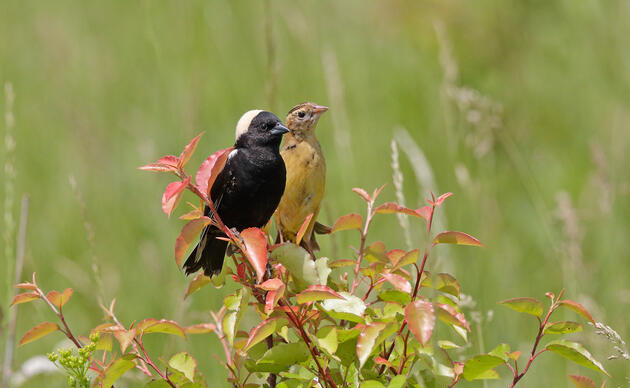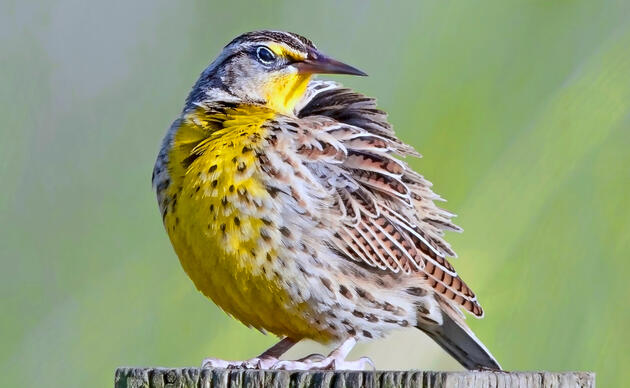People are the heart of conservation, serving as ambassadors in fostering understanding of our natural world and humanity. Summer technicians play a key role in collecting essential bird data that helps inform our work. Often new in their careers, these technicians give us an opportunity to learn from their perspectives, just as much as they learn from us. Ensuring a positive work experience is crucial as we aim to nurture their professional growth and cultivate a foundation for long-term success. This past summer was no exception. We are pleased to share the next step for Kirsten Linnemeier former Audubon Great Plains Summer Technician, current Coordinating Wildlife Biologist for the American Bird Conservancy.
Q: Before working as a Grassland Bird Technician with Audubon Great Plains, what were you up to?
A: I graduated Spring '22 from University of Wyoming with a B.S. in zoology. RIght out of college I moved to a small town in NW Iowa working for Iowa State University, where I was a seasonal MSIM (Multiple Species Inventory and Monitoring) technician. I spent my time surveying for mammals, reptiles, odonates, fish, and vegetation. After my season ended I moved to the beautiful black hills of South Dakota to work for a doggy day care - wrangling up to 30 pups at a time in snow, mud, rain, or shine.
Q: What was your favorite experience working with Audubon Great Plains?
A: My favorite experience with Audubon Great Plains was the chance to go to the SD Grazing School. I was able to learn so many new things because Audubon prioritized professional development. Going to fire field days, and many ranch tours exposed me to so many different ways of thinking and different takes on regenerative ag.
Q: Did any bird surveying experiences stand out to you?
A: I really enjoyed watching a group of Common Nighthawks catching an early breakfast in North Dakota. It was a perfect morning for them, the sun just coming through the low clouds and mosquitos to boot.
Q: During your time working with Audubon Great Plains, what inspired you?
A: I was inspired many times working on the range, listening to the birds sing as the sun rose over the prairie but one thing that has stayed with me and has become my driving force was the dream of creating a legacy. I can vividly remember tearing up listening to a producer speak to a room of a hundred individuals about legacy, of being the lands caretakers who care about utilizing their resources, not only to sustain their cattle, but to keep the wildlife and prairie healthy. Who continue teaching, and planting a seed of passion for conservation in their children, who hopefully will instill the same in their children. At present my legacy is helping others realize this dream, cultivating hope that we can restore and protect America's grasslands.
Q: How did your time working with Audubon Great Plains surprise you?
A: I think what surprised me about my time with Audubon Great Plains were the relationships that were cultivated over just a few short months. Hiking out into some remote open spaces I spent a lot of time by myself - I learned a lot about who I was, I grew in my faith, and became deeply connected with the land. I was able to meet really wonderful people, folks that I could spend years learning from and still not have enough time to learn it all. I am so grateful to have had the opportunity to make those friendships that continue on today.
Q: And what are you up to now?
A: Now, I am a Coordinating Wildlife Biologist working for American Bird Conservancy out of the NRCS Field Office in Bison, SD There is no doubt my time with Audubon Great Plains completely changed the trajectory of my career path. Working with private landowners on some of South Dakota's last intact native prairies lit a fire in my soul that I hope to feed for a lifetime.





